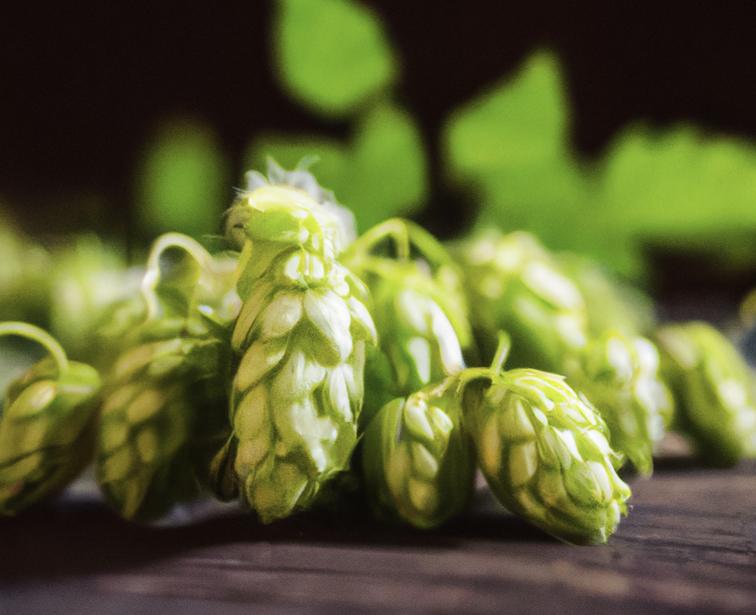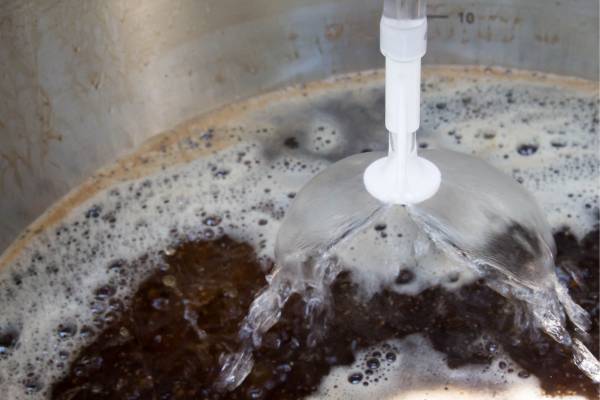Crafting the perfect Kölsch beer is an art form that requires precision, patience, and a passion for brewing.
As a seasoned homebrewer and beer enthusiast, I have had the pleasure of tasting a wide variety of beers from around the world. Yet, there’s something about the delicate, crisp, and refreshing taste of a well-crafted Kölsch that has captured my heart.
In this blog post, I’ll share with you my knowledge, experience, and passion for making Kölsch beer, so you too can enjoy this fantastic brew at home.
The Origins of Kölsch Beer
Before we dive into the brewing process, let’s take a step back and learn about the origins of this unique beer. Kölsch is a style of beer that hails from Cologne, Germany. It is a top-fermented, light-bodied ale with a distinctively crisp, clean, and slightly fruity flavor profile.

Kölsch is known for its pale, straw-yellow hue and its refreshing, easy-drinking qualities. The style is protected under the Kölsch Konvention, which dictates that only breweries within the city of Cologne can legally call their beer “Kölsch.”
The Ingredients
To brew a true Kölsch, you’ll need the following ingredients:
1. Pilsner malt: This is the primary malt used in a Kölsch, providing the light, crisp base for the beer.
2. Wheat malt: A small percentage of wheat malt can be added to enhance mouthfeel and head retention.
3. Noble hops: Traditional German hops, such as Hallertau, Tettnang, or Spalt, are used to provide a subtle bitterness and delicate hop aroma.
4. Kölsch yeast: This is a unique yeast strain that ferments at ale temperatures but has characteristics of both ale and lager yeasts, resulting in a clean, crisp flavor profile.
No Grains No Kölsch
The grains chosen for Kölsch beers are selected to achieve a pale color and contribute to the overall flavor profile of the beer.
While there may be some variation in recipes, the most common grains used in Kölsch beer include:
- Pilsner Malt: Kölsch beers often use Pilsner malt as the primary grain. Pilsner malt is a light-colored malt that lends a crisp and clean flavor to the beer [1].
- Two-Row Barley: Two-Row barley is another commonly used grain in Kölsch beer recipes. It provides a solid base for the beer and contributes to its malty character [2].
- Wheat Malt: Some Kölsch beer recipes may include a small proportion of wheat malt, usually around 10-20% of the total grain bill. The addition of wheat malt can enhance the beer’s head retention and add a touch of sweetness [3].
These grains work together to create a balanced and refreshing beer with a pale color and subtle maltiness. It’s important to note that different recipes may have slight variations in the specific types and proportions of grains used.
The Hops Used In Kölsch Beer
One of the defining characteristics of a Kölsch is the use of specific hop varieties, which contribute to its unique aroma and taste. The typical hops used to brew a Kölsch are German noble varieties, including Tettnang, Hallertauer Mittelfruh, and Spalt.
Tettnang hops are grown in the Tettnang region of southern Germany. These hops are known for their mild and floral aroma, which adds a delicate and slightly spicy character to the Kölsch beer. They are often described as having a noble quality, lending a refined and subtle hop presence to the brew.

Hallertauer Mittelfruh hops come from the Hallertau region, located in Bavaria, Germany. They are one of the oldest and most renowned hop varieties in the world. These hops offer a mild and floral aroma, with hints of herbal and earthy notes. The use of Hallertauer Mittelfruh hops in a Kölsch contributes to its balanced and refreshing character.
Spalt hops originate from the Spalt region in Germany and are highly regarded for their delicate and spicy aroma. They provide a gentle bitterness to the beer while imparting floral and herbal notes. Spalt hops are often used in traditional German beer styles, including Kölsch, to achieve the desired flavor profile.
When brewing a Kölsch, using a combination of these German noble hop varieties creates a harmonious and well-rounded beer. The Tettnang, Hallertauer Mittelfruh, and Spalt hops work together to provide a subtle hop presence without overpowering the delicate malt profile of the beer. The resulting brew is crisp, clean, and highly drinkable, with a balanced combination of floral, herbal, and spicy hop flavors.
It’s worth noting that while these hop varieties are considered typical for a traditional Kölsch, brewers may experiment with other hop varieties or use different combinations to add their own unique twist to the style. However, sticking to the German noble hops is a common practice to maintain the authentic character of a classic Kölsch beer.
The Brewing Process
Now that we have our ingredients, let’s dive into the brewing process. Follow these steps to create your very own Kölsch beer:
Step 1: Mash Your Grains
Start by mashing your grains, typically using a ratio of about 10-15% wheat malt to 85-90% Pilsner malt. Aim for a mash temperature of around 148-152°F (64-67°C) to produce a highly fermentable wort, which will result in a crisp, dry finish.
Mash for 60 minutes before proceeding to the next step.

Step 2: Boil and Hop Additions
After lautering and sparging your grains, bring your wort to a rolling boil. Add your noble hops at the beginning of the boil for bittering, and again towards the end of the boil for aroma. The total boil time should be around 60-90 minutes.
Step 3: Chill the Wort and Pitch the Yeast
Once the boil is complete, quickly chill your wort down to the proper fermentation temperature, which for Kölsch yeast is typically between 60-65°F (15-18°C). Aerate the cooled wort and pitch your Kölsch yeast.
Step 4: Fermentation
Allow your Kölsch to ferment for 7-10 days at the recommended temperature range. Once fermentation is complete, you’ll want to cold crash your beer by lowering the temperature to around 40°F (4°C) and allowing it to rest for an additional 1-2 weeks. This will help to clarify the beer and enhance its clean, crisp character.
Step 5: Bottle or Keg and Enjoy
After the cold crash, it’s time to bottle or keg your Kölsch. If bottling, be sure to add a small amount of priming sugar to achieve the desired level of carbonation. Allow the beer to condition for an additional 2-3 weeks before enjoying your homemade Kölsch!
The Tasting Experience
A well-crafted Kölsch is a thing of beauty. When pouring your beer, expect a pale, straw-yellow color with a bright, white head that lingers. The aroma should be a delicate balance of bready malt, fruity esters, and subtle noble hop character. Upon taking your first sip, you’ll be greeted with a light, crisp body that showcases the Pilsner malt while allowing the subtle fruitiness of the yeast and the gentle hop bitterness to shine. The finish should be clean, dry, and highly refreshing.
In Conclusion: 5 Facts About Kölsch Beer
1. Kölsch is a protected beer style, meaning only breweries within the city of Cologne can legally call their beer “Kölsch.”
2. It is a top-fermented ale that showcases the characteristics of both ale and lager yeasts, providing a clean, crisp flavor profile.
3. Kölsch is brewed primarily with Pilsner malt, with a small percentage of wheat malt to enhance mouthfeel and head retention.
4. Traditional German noble hops are used to provide a subtle bitterness and delicate hop aroma in Kölsch beers.
5. A well-crafted Kölsch beer should be pale, straw-yellow in color with a crisp, light body, and a clean, dry finish.
Now that you know the ins and outs of brewing Kölsch beer, it’s time to embark on your own brewing journey to create this refreshing, easy-drinking ale. Happy brewing!
FAQs
What hops are used in a Kölsch?
Kölsch is a German beer style that typically uses noble hops, such as Hallertau, Tettnanger, Spalt, and Saaz. These hops provide a delicate, balanced bitterness and a subtle floral or spicy aroma, complementing the clean, crisp, and slightly fruity character of the Kölsch. The exact hop varieties and amounts may vary depending on the brewer’s recipe and preferences.
What is special about Kölsch?
Kölsch is a unique beer style originating from Cologne, Germany. It stands out due to its specific brewing process, regional exclusivity, and distinct flavor profile. Kölsch is brewed using top-fermenting yeast, which gives it characteristics of both ales and lagers. It is pale, clear, and has a delicate balance of maltiness and subtle fruity notes, with a crisp, dry finish. Kölsch is protected by the Kölsch Konvention, meaning that only breweries within a 50-kilometer radius of Cologne can legally call their beer “Kölsch.” This exclusivity adds to its special appeal and cultural significance.
Is Kölsch easy to brew?
Kölsch is relatively easy to brew for experienced homebrewers, as it requires a simple grain bill and a clean, well-attenuating yeast strain. However, it can be challenging for beginners due to the need for precise fermentation temperature control and proper lagering techniques to achieve the desired clarity and crisp, clean flavor profile.
How is Kölsch different than lager?
Kölsch is different from lager in several ways:
1. Origin: Kölsch is a regional beer style originating from Cologne, Germany, while lager is a broader category of beer encompassing various styles from different regions.
2. Yeast and Fermentation: Kölsch is an ale, meaning it is brewed with top-fermenting yeast at warmer temperatures (around 15-20°C), resulting in a quicker fermentation process. Lagers are brewed with bottom-fermenting yeast at colder temperatures (7-12°C), leading to a slower, longer fermentation process.
3. Flavor profile: Kölsch has a light, crisp, and slightly fruity flavor with a mild hop bitterness, while lagers typically have a clean, smooth, and well-balanced taste with a more pronounced maltiness and less fruity esters.
4. Color: Kölsch is usually pale gold in color, while lagers can range from pale gold to amber or even dark brown, depending on the style.
5. Clarity: Kölsch is typically clear and bright, whereas lagers can vary in clarity from crystal clear to slightly hazy, depending on the specific style.
6. Alcohol content: Kölsch generally has a lower alcohol content, usually around 4.5-5.5% ABV, while lagers can range from 4% to over 6% ABV, depending on the style.
What is the difference between a pilsner and a Kölsch?
The main difference between a pilsner and a Kölsch lies in their origin, brewing process, and flavor profile. Pilsner is a type of pale lager that originated in Pilsen, Czech Republic, while Kölsch is a regional specialty from Cologne, Germany. Pilsners are brewed using bottom-fermenting yeast at colder temperatures (around 45-55°F), resulting in a clean, crisp, and slightly bitter flavor. On the other hand, Kölsch is brewed using top-fermenting yeast at warmer temperatures (around 60-70°F) and then cold-conditioned, giving it characteristics of both ale and lager. Kölsch has a subtle fruity aroma, a delicate malt flavor, and a soft, dry finish with low bitterness.




